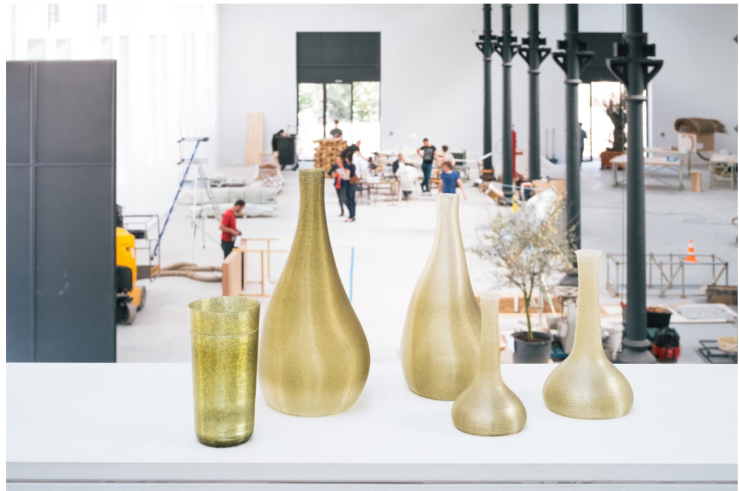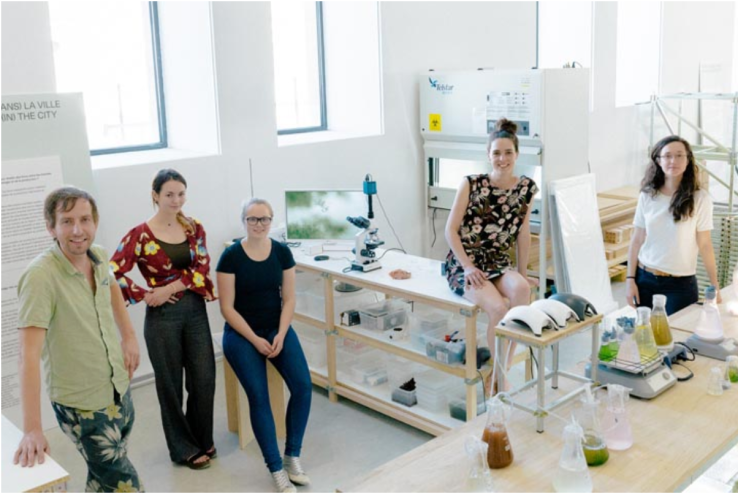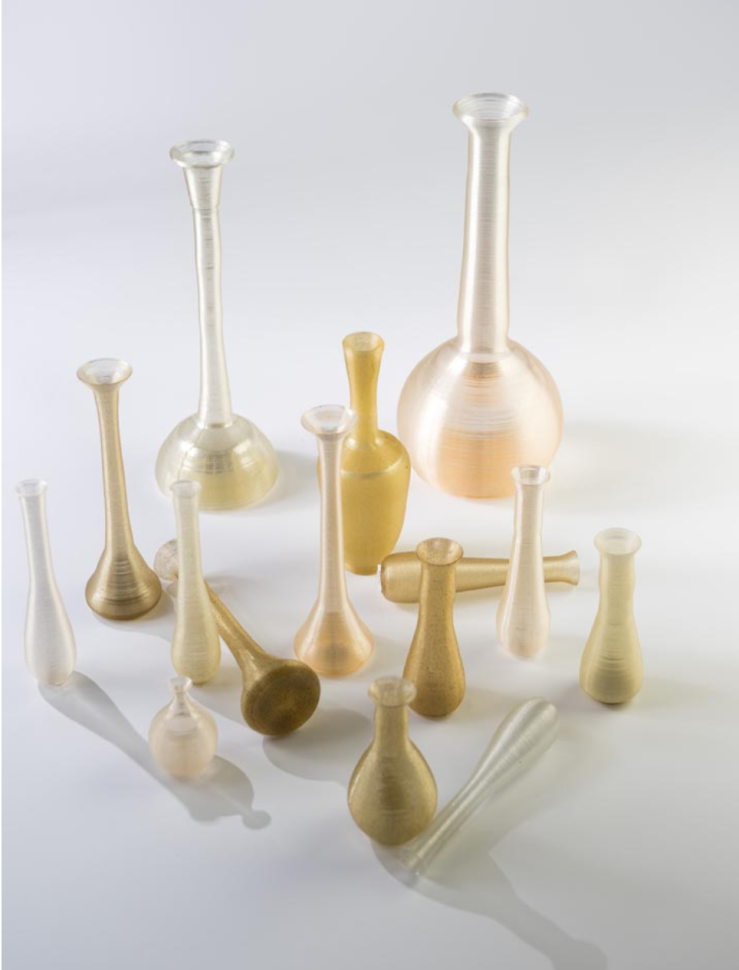Seaweed and mushrooms might not seem like the most likely ingredients for 3D printing, but the material for this DIY tech is getting ever more diverse. Instead of using plastics, new filaments have come to market that use resins or metal powders – there are even machines that print with sugar and other edible substances. These ingredients can give designers more flexibility when it comes to what the printed objects can be used for, but it doesn’t address a very important quality in long-term design goals: sustainability. Design and engineering have turned towards more ecologically-minded projects as the threat of climate change grows ever more present across the globe. Responding to the need for industries that will protect our planet, clean manufacturing models are becoming a top priority for many. For one Dutch design duo, algae (along with some other biologically-sourced materials) is a substance that can be used to push the boundaries of what can be done with 3D printing, using it as the base of new types of printing matter.
Algae may become one of the main sources of this “bioplastic,” as Dutch designers Maartje Dros and Eric Klarenbeek are discovering from working with the aquatic microplant. After drying and processing, the algae can be used as a 3D printing polymer that the designers believe could be used to completely replace synthetic plastic. Many printed objects up to now that use regular plastic filament have a rough DIY look to them, often constraining printed objects to novelty devices or interim prototypes. Though the bioplastic could be used for more conventional uses like shampoo bottles, it can also be printed with to create higher design objects. The algae material has a unique look and is striking when used for lighting fixtures or serving vessels.

Dros and Klarenbeek are working towards creating a network of 3D printers that are locally based and use biopolymer – what’s commonly referred to as “the 3D Bakery.” This network will create a dedicated way to distribute designs on the Internet yet still connect people with their local community. “Our idea is that in the future there will be a shop on every street corner where you can ‘bake’ organic raw materials, just like fresh bread,” said Klarenbeek. “You won’t have to go to remote industrial estates to buy furniture and products from multinational chains. 3D printing will be the new craft and decentralised economy.”
The pair first experimented with other organic matter like potato starch and cacao bean shells before achieving desirable results with algae, and are continuing their research with carbon emission-negative media by teaming up with several universities and scientific labs. Arles, France-based Atelier LUMA is a non-profit that connects design, business, and research in the hopes of creating ecologically sound and local production. Their partnership with Studio D&K is called Algae Labs, and in addition to their support of independence from petrochemical-based plastic, they also are furthering the potential for algae growth across local wetlands – a significant way to distribute the benefits of a CO2-absorbing crop.

Previous projects have seen Studio Klarenbeek & Dros developing a method to 3D print with mycelium – the fungal root system that grows mushrooms as fruit. While they do not create them with the intention to make food, the mycelium itself is a type of composter – it fuels itself with raw plant material. Grown within biopolymer molds into shapes for light fixtures and insulated reusable packing, the fungus-based material is currently available through Netherlands-based Krown Design. The finished designs are lightweight and shelf stable, and when the user has finished with them they can be composted. Krown offers their products in several forms, including custom orders of “any specification or desired shape,” as well as kits for customers to grow their own mycelial objects.

Adapting non-plastic materials to create 3D printing polymer could create huge benefits in a few different ways. The need to use non-renewable resources for the plastic-based 3D printing filament creates a strain on an already maxed-out biosphere. Adding yet another plastic-based industry to a global economy that already teeters on the brink of terminal pollution isn’t viable – though some biodegradable filaments are now available, made with corn- or wood-derived ingredients. But if we can fully replace petrochemicals with plants, not only do we remove harmful materials from an exciting new way to make objects, we create carbon-negative local markets that absorb CO2 while they grow material. The use of algae is particularly effective at removing carbon from the atmosphere compared to other plant crops. Additionally, the effect of decentralizing intellectual property gives consumers a way to access high design while still keeping some of their money in their own communities. While the 3D Bakery is still not a concept that has fully come into being, its ilk are becoming more common. In the meantime, if you live in an urban area then you already have access to a Maker-style printing shop.

